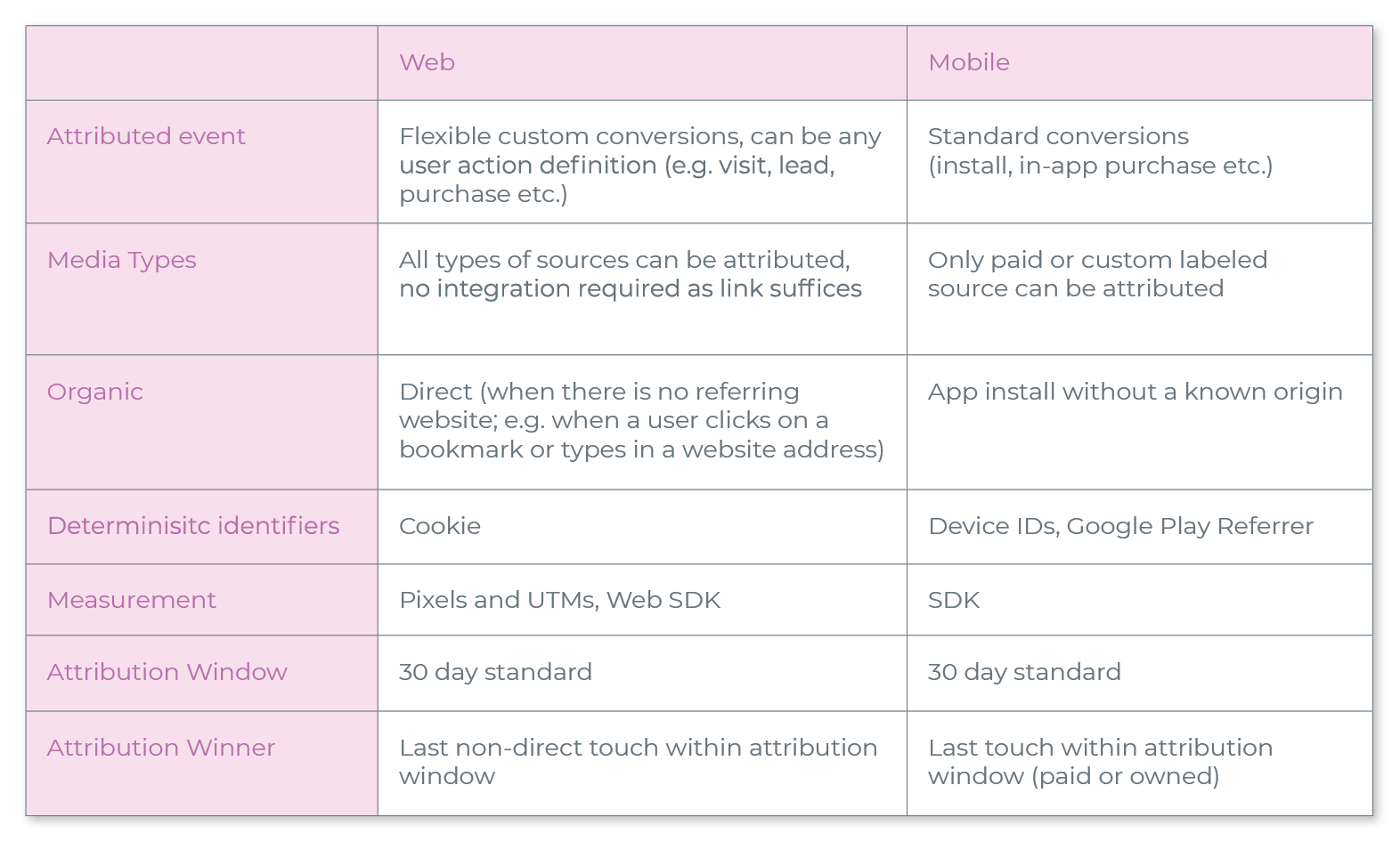
Web attribution
Web attribution is the process of identifying and crediting the touchpoints along a given user journey that lead to a conversion.
What is web attribution?
Web attribution is the process, and supporting technology, of understanding and attributing the touchpoints of a consumer journey across the web, whether it’s on a desktop or mobile web browser.
In the past, web attribution was fragmented with multiple browsers and sessions using different protocols and tools for structure and communication.
However, because the consumer journey is also fragmented overall, involving multiple devices (smartphones, tablets, personal computers, etc.), platforms (mobile vs desktop web), and channels (paid, email, social, etc.), web attribution has evolved over the last decade and is being paired with mobile attribution to form holistic attribution solutions.
Web attribution versus mobile attribution
The following is a chart comparing and contrasting web attribution to mobile attribution.

How does web attribution work?
Web attribution collects web events from users and attributes these conversions, either to referrers received from the load of the web SDK on a client’s webpage, or as “direct” traffic (meaning no referrer was involved). The web SDK is a small Javascript code snippet which is loaded into the measured site, designed to maintain both the performance and security of the site.
These referrers, which can be either paid or non-paid, indicate from which site a user came before arriving at the measured site. User-level referral data is then carried throughout the web session using either the web cookie ID or a persistent customer user ID (CUID).
Before a referrer reaches an attribution provider’s server, however, marketers must set up an attribution flow, including the following elements:
- Cookie-based measurement: The cookie is the primary referrer for web attribution, and a temporary identifier on web.
- Attribution links: Just like in mobile, web attribution data can work with deep linking technology to drive a contextually relevant user experience across web pages and measure the impact of web assets on marketing goals overall. These links must be configured in advance by the marketer within the attribution provider’s dashboard.
- Measurement parameters: In addition to links, measurement parameters must also be specified within the attribution dashboard to determine which data will be collected at each measured touchpoint.
The standard attribution model for web attribution, both in and out of the context of holistic attribution, determines that the last non-direct touchpoint that engaged a user receives credit for the conversion. Below illustrates an example of this attribution flow, with Google receiving the credit in this case.

Why is web attribution important?
Much of web attribution’s importance today can be understood in the context of mobile. As mentioned before, web attribution is one of two main pieces to a holistic attribution solution of the modern customer journey across devices, platforms, and channels. Within holistic attribution, web attribution completes the mobile app understanding of the user journey by uncovering non-paid traffic sources on the web.
Beyond that, despite the limitations and challenges the web world for marketing measurement and analytics has presented, the fact still remains that web attribution technology has been around for many years, and will likely persist. The web is an inevitable stop in the consumer experience for many users and, even with the rapid crumbling of the web cookie for identification, marketers are learning that it undoubtedly fuels mobile growth.
For example, mobile-first companies incorporate web ads and pages to enhance cross-device and platform user experience, also using web-to-app strategies to drive installs and conversions. On the other hand, web companies are better able to position mobile within their own brand strategies and enhance performance by understanding the relationship of web to these non-web goals.



